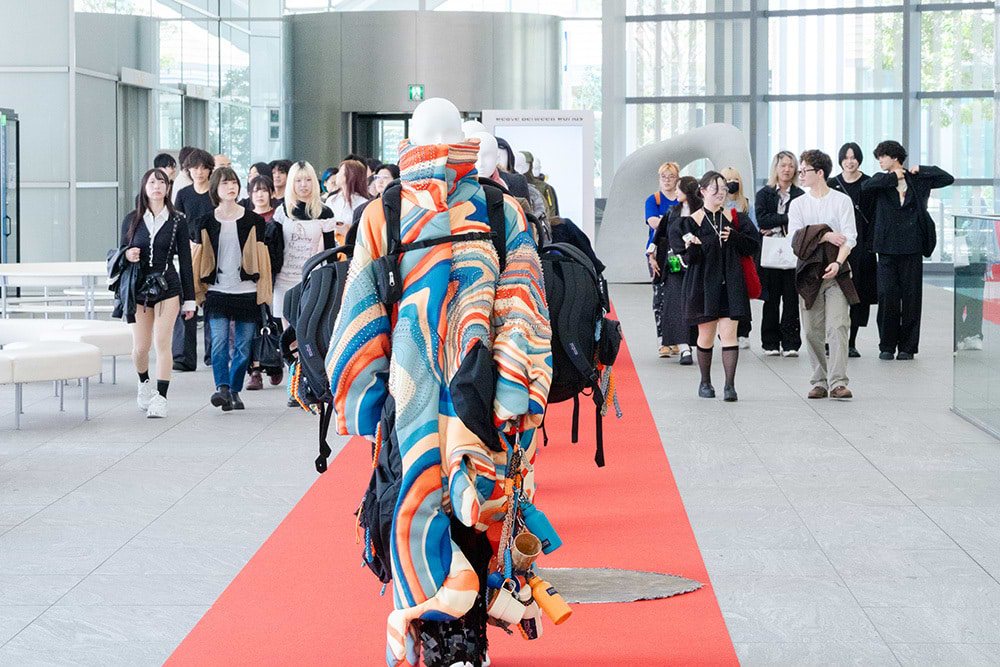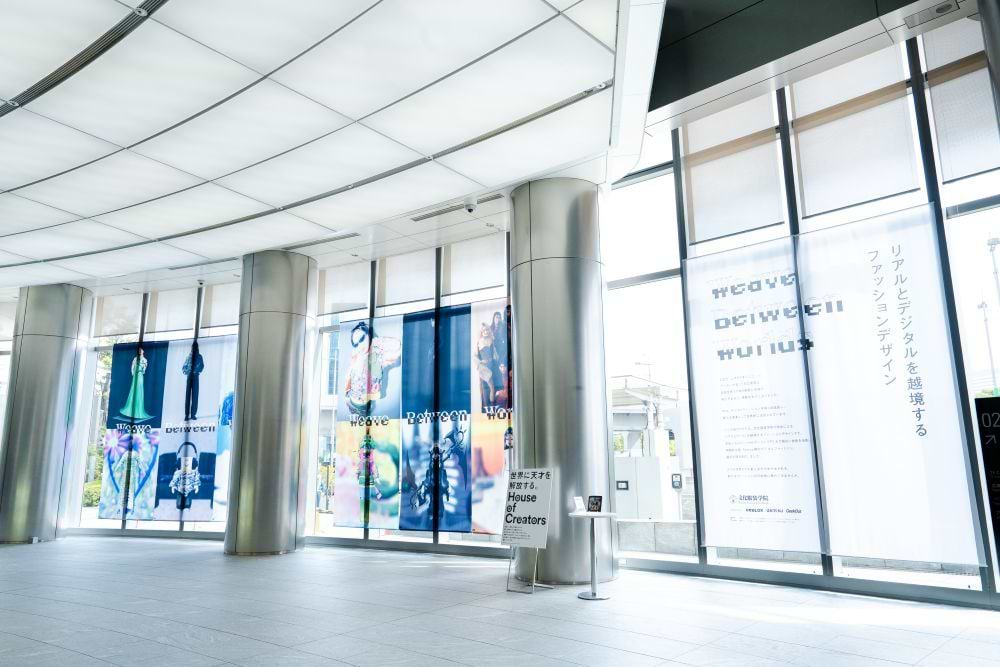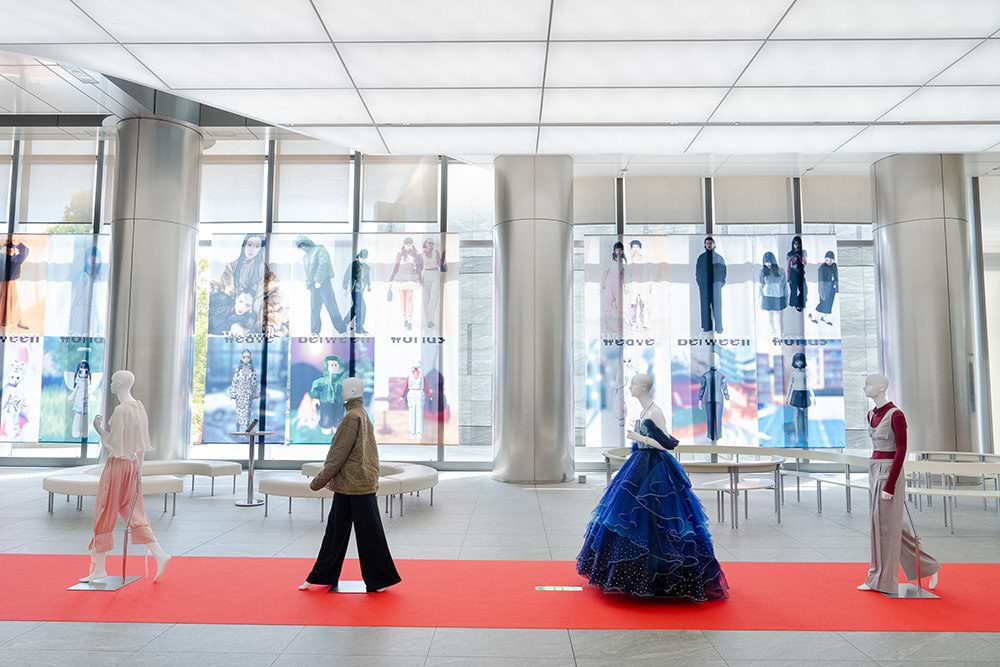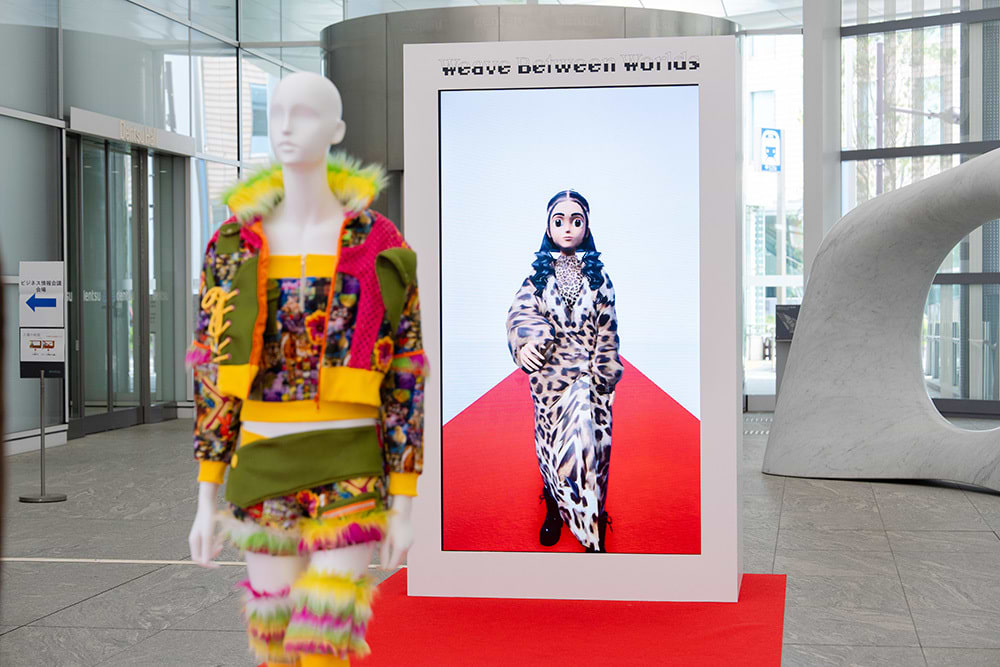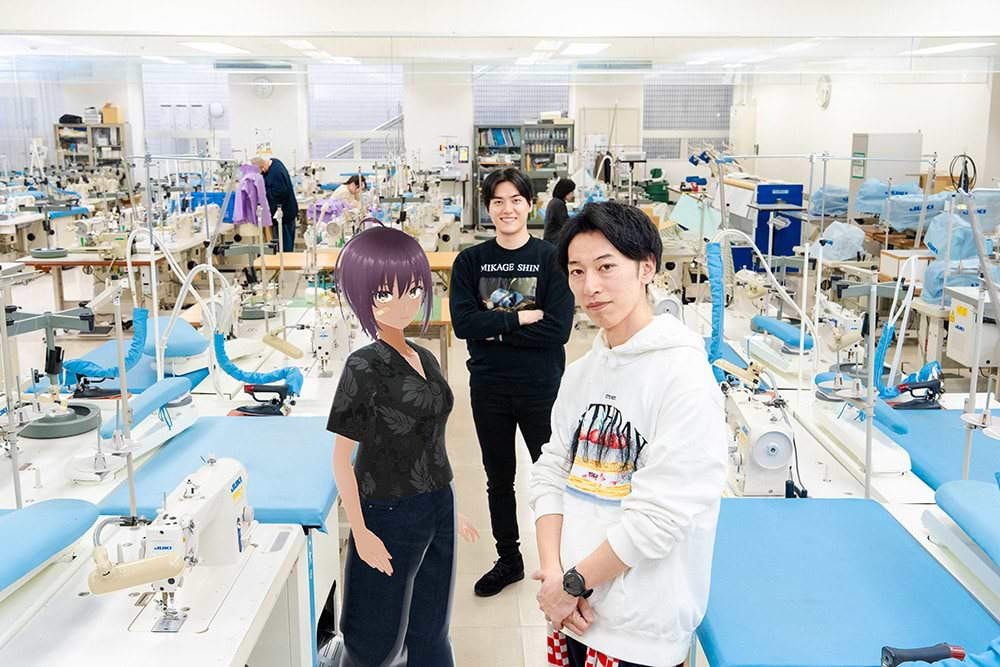
Are you aware of the “digital fashion” market, which is growing rapidly on a global scale? It’s a rapidly growing industry projected to reach approximately 16 trillion yen by 2030.
Bunka Fashion College, which has produced many world-renowned fashion designers, has established a new “Virtual Fashion Course” starting in 2024 in order to cultivate the next generation of talent capable of handling digital fashion.
The course, an elective department that students can transfer into in their third year, ran a “Digital Fashion Program” for five months starting in October 2024, the second semester, in collaboration with the immersive social platforms Roblox and GeekOut, and the Dentsu Group.
In this article, Satoshi Tokuoka of Bunka Fashion College, along with fellow instructors SushiPa, a 3D CG artist from GeekOut, and Shusuke Morioka from the Dentsu Group, looks back on the digital fashion program, which was the first of its kind in Japan.
21 students became “dual creators” bridging both physical and digital fashion worlds
—Please introduce yourselves to us.
Morioka: I work at the Dentsu Group and am in charge of business development and investment with overseas startups and emerging platforms, and as part of that I am promoting a global partnership with Roblox.
As part of the Dentsu Group’s “House of Creators”*1 project to support the next generation of creators, we planned Japan’s first “Digital Fashion Program” with official support from Roblox and reached out to Bunka Fashion College. In this program, in addition to planning and producing the entire project, I am also in charge of giving lectures on business.
| *1 | House of Creators |
News release: Dentsu Launches “House of Creators” to Inspire Excitement Worldwide by Supporting Next Generation Content Creators
SushiPa: My name is SushiPa and I’m a CG artist affiliated with GeekOut. In this program, I’m mainly in charge of giving lectures on creating UGC*2 items on Roblox. GeekOut is a company that promotes the development of Roblox’s creator economy and the social adoption of the platform by supporting creators active on Roblox and collaborating with IP and brands. I usually work in areas such as content planning, producing, and project management.
| *2 | UGC = User-Generated Content |
Tokuoka: I am a full-time lecturer at Bunka Fashion College and am in charge of the Virtual Fashion Course, which was newly established in 2024. With the help of these two people, I planned a “Digital Fashion Program” as a second-semester class for the same course.
—To summarize, the “Virtual Fashion Course” is a new one-year elective course that started in April 2024, and in the second semester of this course, from October to February, a “Digital Fashion Program” was implemented in collaboration with the Dentsu Group and GeekOut, with official support from Roblox.

Morioka: That’s right. Tokuoka was the class teacher for the Virtual Fashion Course for one year. SushiPa and I lectured on Roblox digital fashion for about five months from October, in the second half of the year. Roblox headquarters provided a wide range of official support, from helping with the planning of the course content to providing knowhow on production tools, as well as the in-game currency Robux that is needed to create and upload works, and even expert feedback*3. This time, it wasn’t a so-called endowed course, but an official curriculum that also counts toward graduation credits, so I felt a great sense of responsibility.
| *3 | Roblox supports virtual fashion design education at Bunka Fashion College, one of Japan’s leading fashion schools. |
—Please tell us about the Virtual Fashion Course.
Tokuoka: This is a new elective course established in 2024 with the aim of cultivating “talented people who can do 3D modeling and create fashion in virtual space.” After gaining experience as a lecturer in several departments at Bunka Fashion College, I was appointed as the head of the Virtual Fashion Course.
—I’ll ask you more about fashion in the virtual space later. What was the one-year curriculum like?
Tokuoka: I mainly taught how to make clothes using a 3D tool called “CLO.” With CLO, you can design clothes in a computer, create 2D patterns, and simulate in real time how the patterns will actually become three-dimensional clothes, even dressing a model in the clothes. It allows students to visualize completed garments in 3D without printing patterns or sewing prototypes.
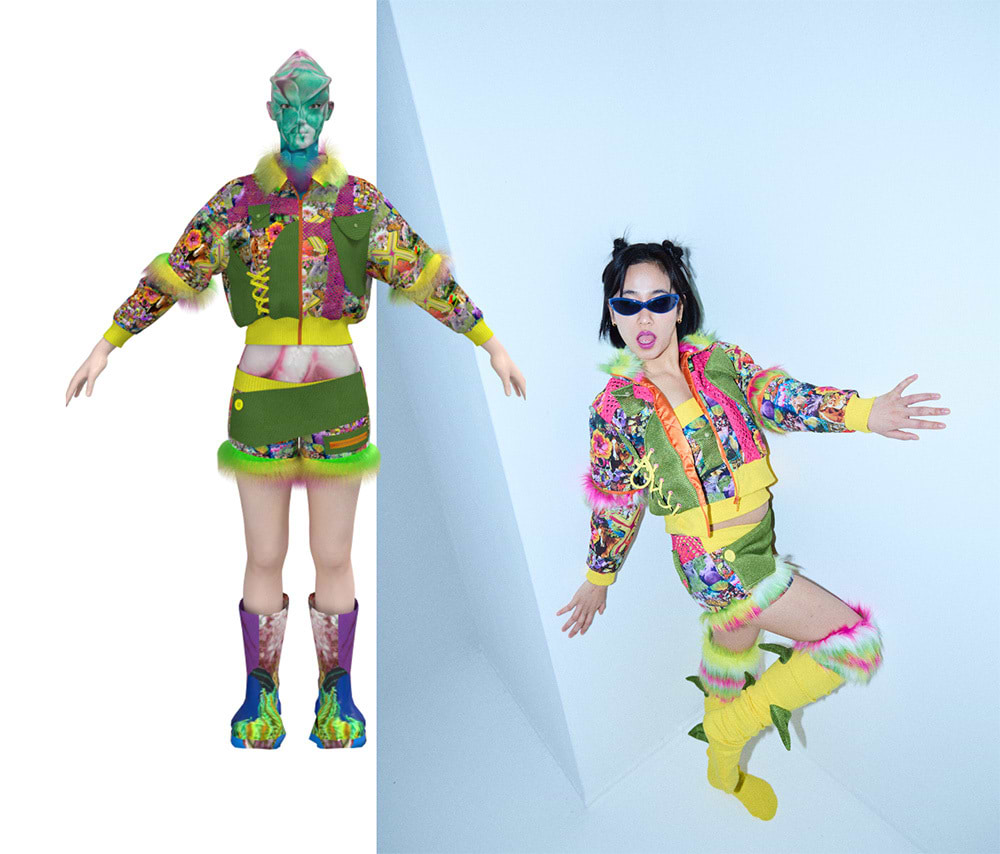
In the second semester of the digital fashion program, the scope of this class covered transferring the clothing data to the Roblox platform and selling them on this platform. Mr. Morioka and SushiPa were in charge of classes related to Roblox.
Related article (Japanese Only): Generation Alpha is crazy about it! The impact of the “immersive social platform” that approximately 80 million people play every day
Morioka: In the end, all of the 21 students in the inaugural class of the course created their own original clothes and also made clothes for their Roblox avatars. They created a gallery space to express their worldview.
To elaborate a little on the terminology, we often hear phrases like “real and digital,”, but because Roblox’s main users, Gen Z to Gen Alpha, tend to see digital as part of the real world, we prefer to use the phrase “physical and digital.”
Build your own “My Brand” with both physical clothing and clothing for your Roblox avatar

—A fashion show was held in February 2025 as the graduation project. What were the students expected to submit as the culmination of their year’s work?
Tokuoka: The final goal of the year was to have the students choose a theme and create their own “My Brand.” In the fashion show, I had them show off their clothes on the runway, either modeling them themselves or asking someone else to model them.
And now we come to the digital fashion program element, where all of the 21 students created a “booth” (space) within Roblox based on the theme of My Brand. They digitized the clothes they made, dressed their avatars, and sold them to Roblox users.

SushiPa: I was mainly responsible for teaching the “Creating Clothes and Spaces for Roblox” part of the curriculum. The flow was that the students first designed their clothes using CLO. They then sewed physical clothes from the patterns they created on CLO, and, using the same CLO data, they transferred the clothes as UGC items using Roblox’s dedicated tool, “Roblox Studio.” The idea is to branch out from the CLO model into physical and digital.
Morioka: However, CLO and Roblox have completely different specifications, and CLO is designed to sew physical clothes from patterns. The students had a hard time making that transition.
SushiPa: Roblox requires significant data optimization. Some people had to reduce the number of polygons in clothes that were several millions on CLO to 4,000 polygons for Roblox. But it was worth the effort, and everyone had fun trying to do things like removing meshes from invisible parts. Before I knew it, everyone was proficient at using the tools, and I was impressed by their incredible ability to absorb information.
Morioka: This time, we also prepared a dedicated server on Discord so that in addition to face-to-face lectures, we could share lecture materials outside of class and check the progress of assignments. It was effective to be able to build a system that allowed for close communication, such as answering detailed questions from students.
—We saw your exhibition on Roblox, and the Roblox avatars have a variety of head sizes and body types. Do you prepare clothes for each body type?
SushiPa: On Roblox, if you create data for one piece of clothing that adheres to the rules, it can be made to fit any avatar body type. So in this class I taught students how to make clothing that follows these rules.
The digital fashion market will grow to 16 trillion yen by 2030!

—How big is the digital fashion market as a business?
Morioka: There are many different ways to calculate it, and there is no strict definition, but it is said that the metaverse market will reach 75 trillion yen in 2030, of which the digital fashion market will reach 16 trillion yen. This is a very high growth rate, and it is gradually attracting attention from the apparel industry.
—On Roblox, ordinary users can also create and sell their own clothes and accessories, known as “UGC items,” for their avatars.
SushiPa: Being a UGC creator on Roblox is already a viable profession. The majority of users who create and sell UGC are game creators, but there is also a large enough market for creators who make avatars and items to make a living from it.
Morioka: Roblox places great importance on the creator economy, and of Roblox’s total annual sales of approximately 540 billion yen per year (based on an exchange rate of 150 yen to the US dollar), approximately 140 billion yen of that is returned to UGC creators. According to official figures, the top 10 creators earn an average of around 4.5 billion yen per year. The top 100 earn 750 million yen, and even if you expand it to the top 1,000, it’s said that they earn around 100 million yen per year.
SushiPa: Not only users, but also companies are creating and selling virtual spaces and items. GeekOut also helps with this, and more than 400 companies and brands are participating in Roblox by providing content to the platform each year.
—With the emergence of huge economic spheres like Roblox, the demand for digital fashion is on the rise.
Morioka: According to a Roblox report, 84% of Gen Z is inspired by digital media to coordinate their physical fashion. There are many people who think that “how their avatar looks is more important than how they themselves look on a daily basis.” Roblox users spend an average of 2.5 hours per day on the platform, and data shows that 20% of that time is spent on customizing their avatars.
SushiPa: For users, physical and digital are naturally connected, and so I believe that it would be in line with user needs if the two markets were to merge rather than be separated. However, there are very few creators who have studied physical fashion, and it is currently digital and CG creators who are also making fashion items.
Morioka: The impetus for this project came from Roblox’s partnership with Parsons School of Design in New York in 2023 to launch the world’s first collaborative classes. When I heard about this, I really wanted to make it happen in Japan, and so I immediately reached out to Bunka Fashion College, one of Japan’s leading fashion schools. As this was the first such initiative in Japan, we had to design the curriculum from scratch and we were feeling our way around, but we were able to successfully realize it one year after conceiving it.
“Everyone can make good clothes” is Bunka Fashion College’s traditional strength
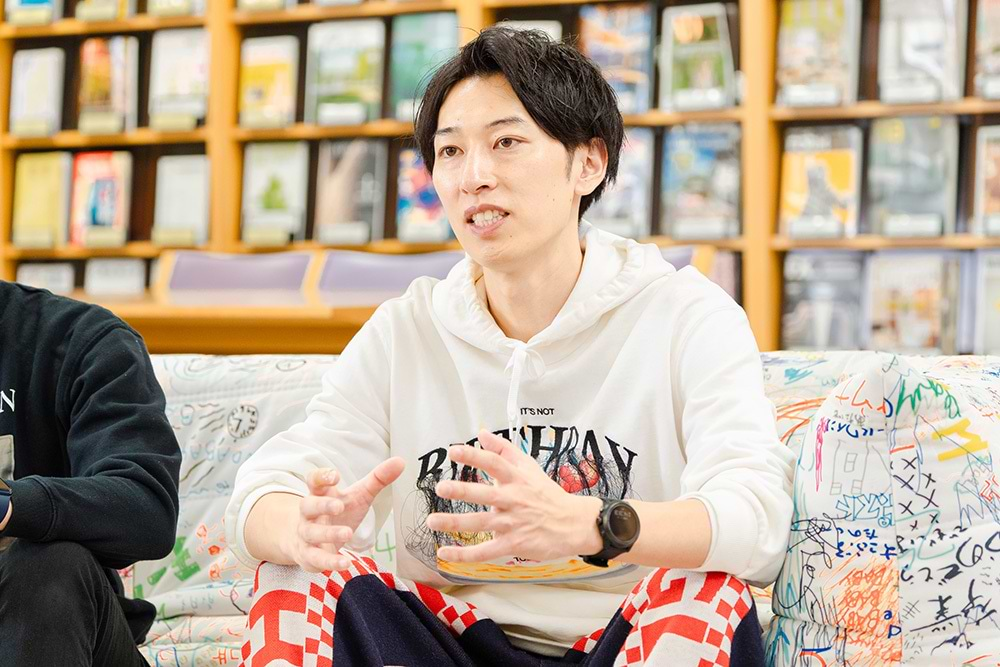
—When you heard from Roblox and the Dentsu Group, planning for Bunka Fashion College’s Virtual Fashion Course had already begun, right?
Tokuoka: When we were approached, we had already started creating the course curriculum, so it was really a last-minute decision (laughs).
Our school’s Virtual Fashion Course was newly established to develop the kind of talent that will be needed in the future, just as SushiPa and Mr. Morioka mentioned. The students are traditional people with a culture of “everyone being able to make clothes properly,” but as they also have digital skills, they are expected to take on the role of digital transformation (DX) in the apparel industry.
The term “digital” generally requires learning everything from the operation to the application of 3D modeling software such as CLO, as well as skills in graphics, video using Blender, and real-life “filming.”
—You mentioned that the 21 students transferred in as third-year students, but did they not learn about digital tools before then?
Tokuoka: All of the students at Bunka learn the basics of digital tools, but only the students in the Virtual Fashion Course are able to use CLO and Blender proficiently. Bunka has various departments such as Creative Apparel Design, Knitwear Design, Industrial Merchandising, and Apparel Design Technique, and students who studied in those departments until their second year transferred to the Virtual Fashion Course in their third year. These were courageous students who jumped into a completely new world.
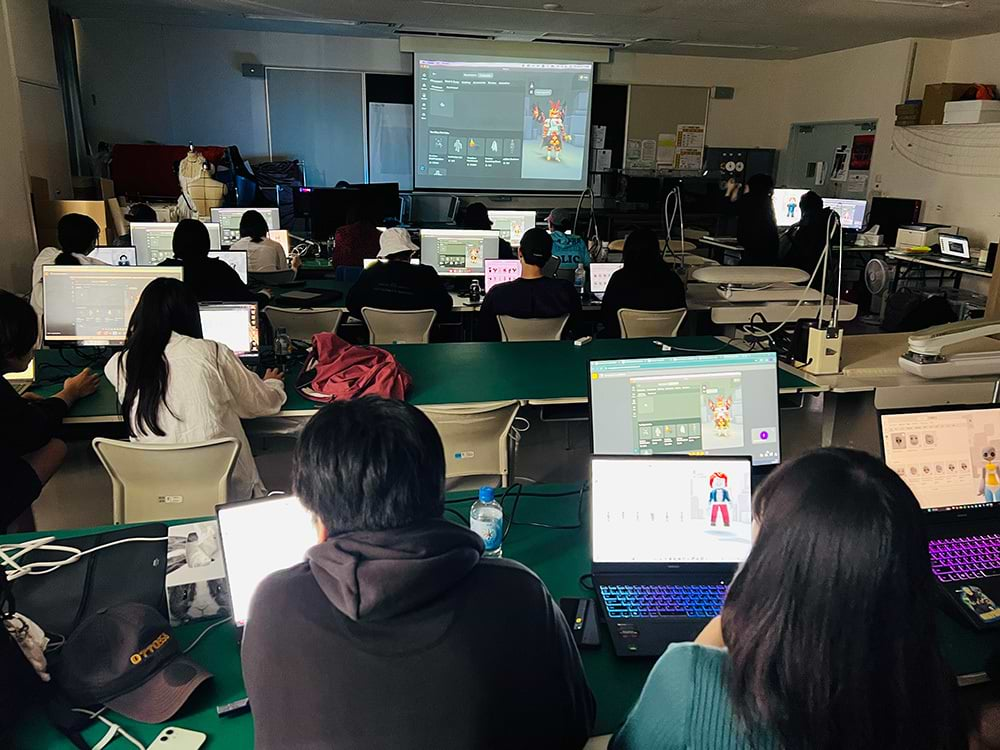
—What do you think of the final product?
SushiPa: It was amazing that no one dropped out and we ended up selling UGC items on Roblox. We made physical clothes based on the “My Brand” theme, and we also made our own UGC items for Roblox, uploaded and sold them, and even created our own booths in the virtual space.
Morioka: Initially, based on the track record at Parsons, I said, “It will be difficult for all of the 21 students to stay the course,” and “Let’s make sure they can correct their course along the way,” but Tokuoka said, “No, they can do it. Let’s let them do it” (laughs). In fact, all of the students completed their tasks with great enthusiasm, and were highly praised by Roblox. I was impressed by how each student expressed the worldview of My Brand so well, both in their graduation fashion show and at the Roblox booth.
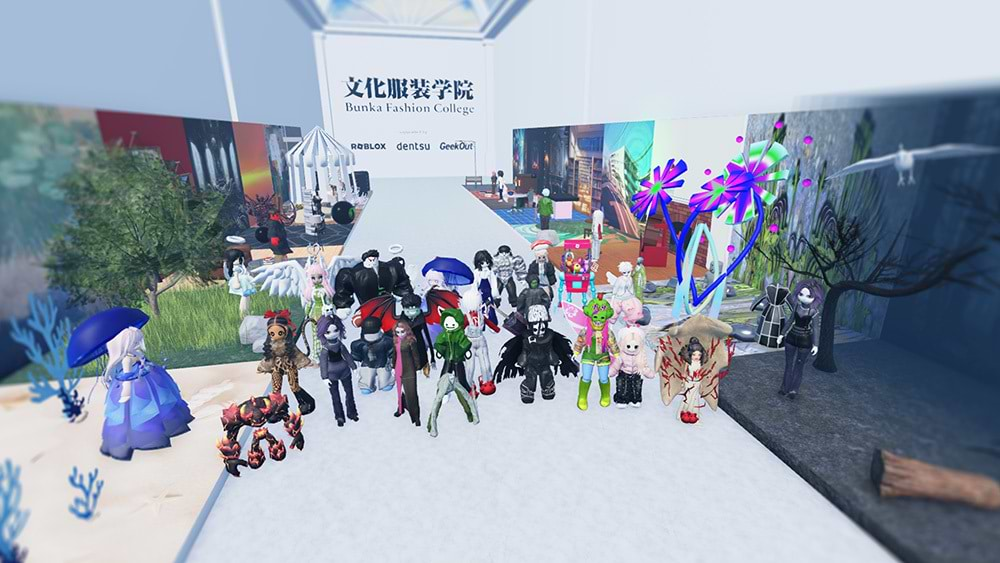
https://www.roblox.com/ja/games/79503413229926/Bunka-Graduation-Fashion-Runway-Class-of-2025
Tokuoka: As I taught the clothing class, I was able to predict that there would be no dropouts among these students. Since they had acquired the skills and attitude to make clothes, all that was left was to manage the schedule for the digital classes. I worked with SushiPa and Mr. Morioka, as well as with other Blender instructors, to focus on building a support system.
Morioka: In one of the final classes, we all uploaded our own UGC items to Roblox at the same time, and everyone was surprised that they started selling right away (laughs). Not only was the quality of the students’ work high, but the Roblox economy, which allows creations to be sold instantly and globally, was also impressive. The students were also pleased that their creations, which embody their own worldviews, were immediately available to people all over the world, and they said that it was very rewarding.
The 21 inaugural students and the future of digital fashion, and…

—The 21 inaugural students have completed their course, but what paths do they plan to take in the future?
Morioka: As expected, many students go on to work in fields that involve making physical clothes. However, there are cases overseas where students have found success in the inventory-free digital fashion space, later launching physical brands from there, so I’m looking forward to seeing what the future holds. All of the 21 students have acquired workflow skills using CLO and Blender, and some of them have expressed a desire to continue working in virtual fashion after graduation.
SushiPa: There are even students who have turned down jobs they had originally been offered, and they are going back to study at game schools starting this April. In fact, one of the students has already secured employment at GeekOut as a UGC creator. I plan to have him help me with my classes in 2025 as my subordinate, or rather as my junior (laughs).
—That’s an amazing connection…! By the way, do you have any role models who are successful in business in the digital fashion field?
Morioka: For example, there’s an American UGC creator called RushX. He’s a top creator who earns hundreds of millions of yen a year on Roblox, but he is currently a student at Stanford University who is focusing on his studies. As well as being a UGC creator, he has also collaborated with various fashion brands, and has even launched a physical fashion brand called “CHRUSH,” which is sold at Walmart and other outlets.
—Please tell us about this program, and the challenges and prospects you see in the digital fashion industry.
SushiPa: This market is growing at a tremendous pace, but human resources are becoming polarized between digital and physical. In particular, as Tokuoka mentioned earlier, there are very few people in the digital fashion market who can “sew their own clothes.”
Now that we have produced some rare talent who can “do both,” it would be fantastic if these people could bring the good points of physical fashion and inspiration that digital-only creators cannot come up with to the digital fashion market.
Tokuoka: Thank you! I believe that Japan also needs a market where this can be properly monetized as a business, and this is what I hope for in the future. Many companies in the apparel industry are introducing tools like CLO, but implementing such an environment is costly. There is an issue that while we are talking about DX, the budget is actually increasing.
So if apparel companies and designers can enter the digital fashion market and turn it into a new source of income, they can do a lot with that money. Designers who have been unable to do what they wanted due to lack of budget may now be able to start their own brand in real life.
So I would like students to understand a little more that “there is already a market in which they can make money through digital technology.” In the future, I would like to update the curriculum to include more consideration of the following points: what kind of market is it; what kind of money flows there; and what kind of items should we propose for those markets?
I want to make this course the best course at Bunka. The number of second-year students has increased from the first, with 24 students having advanced to the next grade. I hope this program becomes one that captures the attention of apparel companies and fashion schools across Japan and make them say, “That program at Bunka is amazing.”
Morioka: As Tokuoka said, I hope to continue expanding and enlarging this project with the second- and third-year classes. In the future, I would like to be able to learn about distribution, promotion, and branding. Also, next year I would like to create a “digital fashion runway” exclusively for Roblox classes at the graduation fashion show.
Some students work in both the physical and digital fields, and even as models themselves, and so I hope that Japan will produce ultra-comprehensive 3D designers who can handle three or even four roles, rather than being just a two-way player. As the Dentsu Group, we plan to continue our relationship with the graduates and support them in various ways, such as through collaborative projects or launching original brands.
—I look forward to seeing many more two-way players advance into the world. Thank you very much.
The physical and digital fashion graduation projects on display at the entrance to dentsu headquarters!
The graduation projects of the inaugural students from the Virtual Fashion Course were exhibited at the entrance to dentsu headquarters from April 15 to April 25, 2025. During this period, Tokuoka and the second-year students also visited dentsu headquarters as part of their internship.
Some of the creations will also be exhibited overseas at the Roblox Developer Conference to be held in California in September this year.
